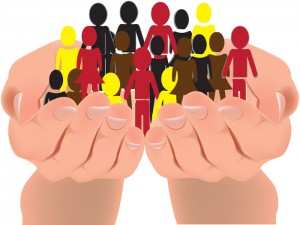Give and Take – A Must Read!
As a fellow in the Diversity and Inclusion program we received a special invite to a networking talk with Paul Nazareth of Canada Helps during this year’s AFP Toronto’s Congress. As Paul was giving us great networking tips he also recommended some resourceful books and he provided us with a quick snapshot of each book. I remember frantically writing down the names of the books and authors. If Paul was recommending them, they must be good! After Congress I took a trip to a bookstore and picked up most of the recommended books. One of those books was Give and Take by Adam Grant.
I found this book to be a wonderful page turner and a wealth of insightful information. I was motivated to think outside of the box and look at my personal and professional life from many perspectives.
The main topics that Adam conveys in the book are about the three social interaction styles: Takers, Matchers & Givers.
Takers – Takers like to get more than they give. They feel that in order to succeed, they need to be better than others.
Matchers – Matchers strive to preserve the equal balance of giving and taking. They operate on the principle of fairness
Givers –Givers prefer to give more than they get. They pay more attention to what other people need from them than what people could do for them.
Upon reading the first handful of insightful stories and research studies my first thoughts were “Which style do I fall into?”
I started to assess my style as young child and moving into my adulthood.
As a child I remember marbles during recess was the highlight of my day. We would play against each other and trade marbles. When trading marbles I made sure the trades were of the exact same size and without any blemishes on them. I realized that I was interacting as a Matcher. As a young child I wanted to be fair and make sure we received the same value in our trades.
As an adult I feel that I fall more into the Giver style by stepping up to the plate and being a team player. I have, however, wondered if my “style” would hurt me in the long run. Will people walk all over me? Are people viewing me as a “yes” person? Would being a giver mean that i wouldn’t be successful, always being at the bottom?
While reading this book, it opened my mind to think about those people that have entered or are currently in my life. I was flooded with thoughts of my family, friends, teachers, and managers. I found myself starting to assign a style to each of them. I was surprised to learn that I have a great mix of these styles in my life.
As I continued my reading, I appreciated that Adam’s book shared examples and theories to understand what makes people with these different types of interaction style “tick.” What is actually motivating them to be this way? What are they getting out of being this way?”
A featured story that resonated with me was about C.J. Skender, a very well respected accounting professor at Duke & North Carolina University. Skender always saw that potential in his students, he believed in them. Adam states “In Skender’s mind, every student who walks into his classroom is a diamond in the rough – able and willing to be mined, cut and polished.” My “Skender” was my former boss that hired me for my first fundraising role – her name is Colette Thomson. I had no experience in fundraising but she saw that I had the passion and a willingness and drive to learn. I looked up to her as my mentor and sought out advice personally and professionally. She was always positive and encouraging.
As part of the diversity and inclusion fellowship each fellow was partnered up with a mentor. We were fortunate to be paired with leaders in our field. These individuals have given their time to guide and encourage the fellows during this exciting journey. These Mentors would be considered Givers, and one might argue, it is their giving that has helped to make them leaders.
As I continued to read Adam’s book, I found it very valuable to hear about stories about prominent individuals from the past and present. Adam shared many stories of triumphs and failures. One of the stories being of Abraham Lincoln, the 16th President of the United States. To hear about how Lincoln struggled before becoming President and how he persevered was inspiring and endearing. In the world of politics being a giver, being viewed as a “pushover” or “powerless” can hurt your reputation Lincoln was a giver through and through. He gave to his country and put the needs of others before his needs and ego. In the long run that’s what he’s most remembered for.
This book opened my mind to explore more about myself and how I may learn to be a stronger “giver.” I now pay close attention to my surroundings and the many “styles” of people that I may encounter. I was pleased to learn that givers aren’t finishing last and are highly successful. As Adam Grant declares “By shifting ever so slightly in the giver direction, we might find our waking hours marked by greater success, richer meaning, and more lasting impact.” I am especially looking forward to Grant’s next book titled the “Originals.” This book is about the choice to battle conformity, buck outdated traditions, and champion ideas and values that go against the grain. The “Originals” will be available worldwide in February. It’s definitely on my reading list for 2016.







